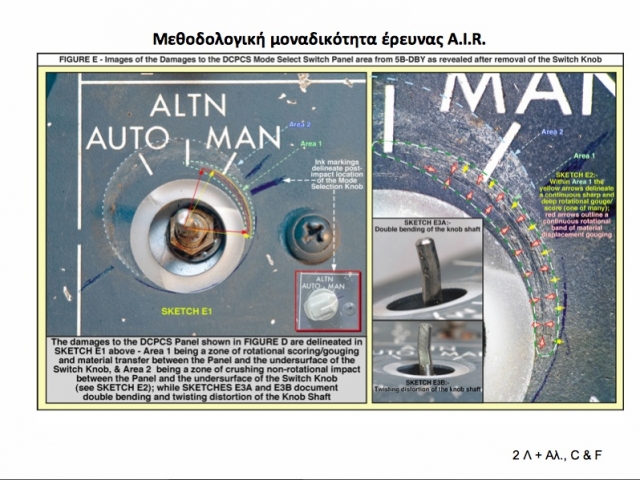On 7 February, the Athens Court of Appeal will announce its decision on the case against the four employees of Helios Airways whose Boeing 737-300 crashed near Athens on 14 August 2005. The crash killed all 121 people on board. Stelios Voudouris is a representative of the "Ioannis Iriotis" law firm, which has undertaken to defend the four defendants - Dimitris Pandazis, CEO of Helios Airways, George Kikidis, director of flight operations, Ianko Stoimenov, chief pilot and Alan Irwin, chief engineer. Maria S. Topalova is talking with Stelios Voudouris.
- Mr. Voudouris, what do you think are the weak points in the pleadings of the prosecutor and the lawyers for the prosecution?
- The honourable prosecutor and the honourable colleagues from the prosecution accept that the cause of this tragic accident is the one mentioned in the report of the Greek commission to investigate the accident. It is that the switch adjusting the pressurisation system was in the "manual" rather than the "automatic" position and therefore, the cabin was not pressurised enough, which led to hypoxia - oxygen deficiency in the brain of all who were on board the aeroplane. As a result, they lost consciousness and in reality the aeroplane was flying without control. We believe, and I personally strongly support the view, that this scenario is not confirmed. It is not confirmed because the necessary checks that can help us make such a conclusion were not carried out. From the outset, we wanted to bring to the court the control panel of the pressurising system and the switch selecting the mode of the system operation to subject them to microscopic analysis and to identify the traces on the control panel. These traces could have led to a conclusion as regards the starting position of the switch. Because the switch was found in a position that did not correspond to any of the three normal positions; it was found 7 mm after the "manual" position, it had obvious signs of physical confrontation and its lever was bent. That is to say, that bearing this in mind, nobody can tell what the starting position of the switch was in order for it to end up in this position, which is different from the normal operating position of the switch.

A group of Canadian experts in the field of crashes went to Cyprus and examined the control panel with a microscope and high-resolution lens. It is still in Cyprus. The experts found that the movement of the switch started from the "automatic" position. This means that if the selected operating mode of the pressurisation system was "automatic" and the cabin was not pressurised, then it was a design fault, a functional problem, which indicates a technical failure. I.e. there was a failure in the pressurisation system and although it was in automatic mode, it was not functioning, as it should have been. This changed the way the pilots reacted because they relied on the automatic mode and there was no way for them to be aware that there might have been a problem. That is to say that the whole theory accepted by the Greek commission to investigate the accident fails. The report of the Canadian experts was reviewed with great attention by leading U.S. experts on aviation safety and they asked the U.S. commission on flight safety to do what it could to resume the investigation. The British Civil Aviation Office has also asked the Hellenic commission to resume the investigation of the accident, taking into account the findings of the Canadian experts. In my opinion, the argument due to which it is believed that the starting "manual" position of the switch is undeniable is absolutely groundless.
- Is this to say that we know what the cause of this tragedy was?
- The cause of the crash was that the cabin was not pressurised, the aeroplane was not pressurised. No one on board had the amount of oxygen that the brain needed to function. The higher you are, the less the oxygen content in the air. To function properly, the human brain needs a minimum amount of oxygen. When the aeroplane cabin does not contain that minimum amount, the higher the aeroplane flies the faster the amount of oxygen in the brain drops. As a result, man loses consciousness first and brain damage follows next, and because the plane is not controlled, it falls. This was the reason - the lack of pressurisation in the aeroplane cabin. There are two explanations. The first is that of the Greek commission, which is accepted by the prosecutor and the prosecution. The other is based on an examination which the Greek commission to investigate the accident did not carry out and which shows that the lack of pressurisation was due to a failure in the pressurisation system rather than to pilot error.
- And what caused this failure?